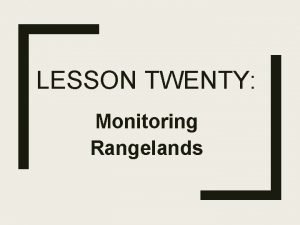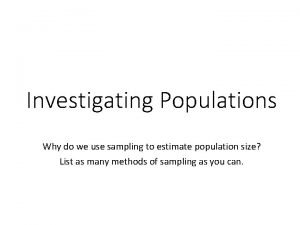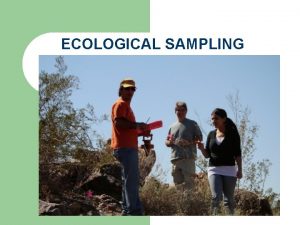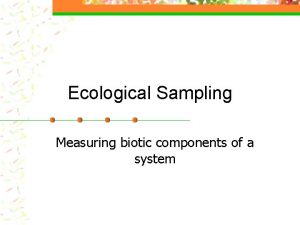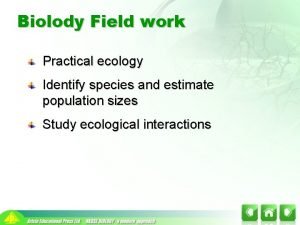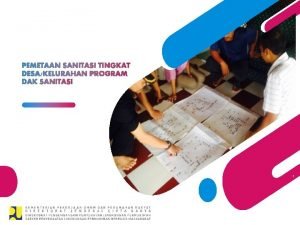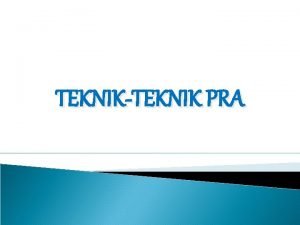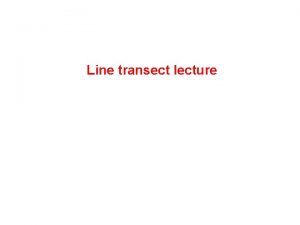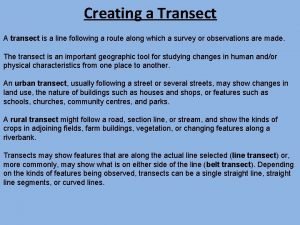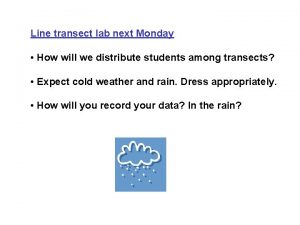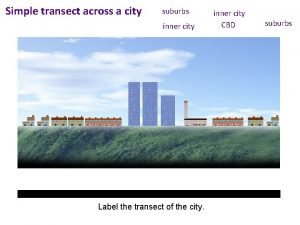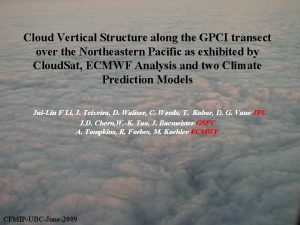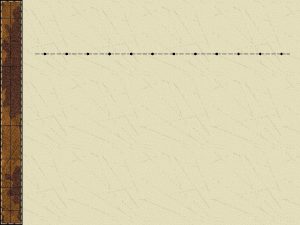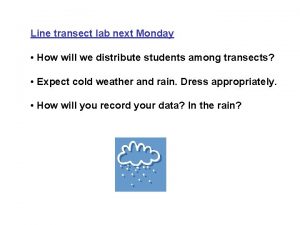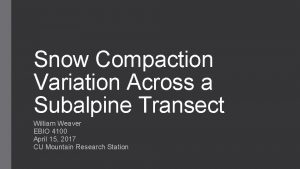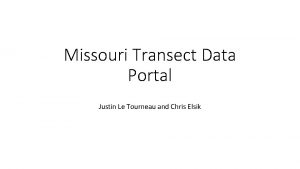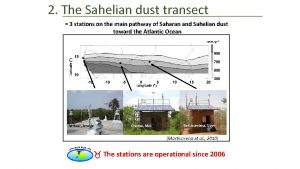The SouthNorth Atlantic Training Transect A Scientific Research
















- Slides: 16

The South-North Atlantic Training Transect A Scientific Research Expedition to observe the ocean

Some Facts and Figures about the Ocean • The ocean covers 70% of the surface of the Earth • The ocean represents over 90% of the Earth’s biosphere • Phytoplankton in the ocean produce as much oxygen as land plants

WHY do we need to observe the ocean? • Predict the weather • Understand the changing climate • Monitor pollution • Use the ocean’s resources responsibly • Monitor blooms

WHAT do we measure?

HOW do we observe the ocean?

The Ship: R/V Polarstern • German research ship • An ‘Icebreaker’ that mainly works in the ARCTIC and ANTARCTIC • 118 metres long • 44 crew + 55 scientists • 2 helicopters on board

In one month at sea… • Polarstern’s engines and boiler burn 900 tonnes of diesel fuel • The ship’s galley (kitchen) bakes 3, 150 rolls • In the mess hall (dining area) 3, 200 eggs, 360 litres of milk and 180 litres of fruit juices are consumed • The people on board use 680 rolls of toilet paper

Where will it go? • Leaves: – Port Stanley, Falkland Islands – on 3 June • Travels north • Arrives: – Bremerhaven, Germany – on 29 June

What will they be studying? • Water temperature and other physical properties • Plastics and micro-plastics • Phytoplankton (tiny floating plants) • e. DNA (environmental DNA in the water can tell us about different plants and animals)

ARGO floats • • • The Polarstern will deploy four ARGO floats along the route These are instruments which drift with the ocean currents, taking measurements Automatically dive to 2000 m Once at the surface it transmits location and recordings by satellite to Argo data centers Since the year 2000, over 3, 700 Argo floats have been deployed around the world Watch this video to find out more: https: //www. youtube. com/watch? v=WGban. Fv. BX 38 Source: Ifremer/ Coriolis Source: GOOS Source: http: //www. argo. ucsd. edu

The CTD Rosette At points along the route, the ship will stop, and a CTD instrument will be lowered into the water. CTD stands for Conductivity, Temperature, and Depth It has severals bottles to collect water samples at different depths as it descends. It can take several hours to reach the deepest parts of the Atlantic and return to the surface. Your school’s decorated cups will be attached to the CTD, and sent 4000 metres down! Animation of how a CTD works: https: //www. youtube. com/watch? v=JOu. Jt 4_TRP 0

How deep is 4000 m? • 4000 m is very deep. • How long would it take you to walk 4000 m – or 4 km - on foot? • If all the children in your class stood on each other’s shoulders, how many classes would it take to reach 4000 m?

Who are the scientists? 25 students; 15 teachers 26 Countries represented Argentina, Bangladesh, Brazil, Chile, Colombia, Croatia, Cuba, Germany, Ghana, Greece, India, Ireland, Israel, Kenya, Madagascar, Mauritius, Mexico, New Zealand, Palestine, Philippines, Portugal, Senegal, South Africa, Tanzania, Trinidad & Tobago, and the USA

What will you ask? • • • Why do we need to measure the ocean’s temperature? What are phytoplankton and why they are important? Why are the oceans salty? Why do we need to protect the ocean? What’s the best thing I could do to help the climate? What is life like on board the ship?

People you might speak to: Mrs Fiona Beckman POGO Dr Lilian Krug POGO Dr Eva Brodte Alfred Wegener Institute Dr Sophie Seeyave POGO Professor Karen Wiltshire Alfred Wegener Institute

 What is this method
What is this method Belt vs line transect
Belt vs line transect Belt vs line transect
Belt vs line transect Ecology measuring cups
Ecology measuring cups Biolody
Biolody Transect walk ppt
Transect walk ppt Horizontal
Horizontal Metode lit
Metode lit Coastal transect
Coastal transect Scientific inquiry vs scientific method
Scientific inquiry vs scientific method How is a scientific law different from a scientific theory?
How is a scientific law different from a scientific theory? Hình ảnh bộ gõ cơ thể búng tay
Hình ảnh bộ gõ cơ thể búng tay Bổ thể
Bổ thể Tỉ lệ cơ thể trẻ em
Tỉ lệ cơ thể trẻ em Gấu đi như thế nào
Gấu đi như thế nào Tư thế worm breton
Tư thế worm breton
